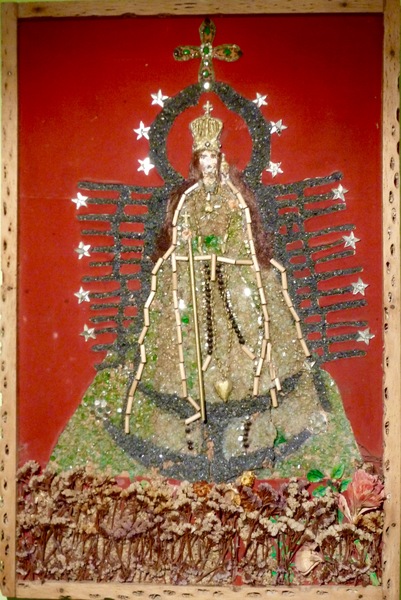Northern Argentina: Holy Week Transformed into an Art Form
4/26/2018

Victor Teodoro Caceres was born in Tilcara in the Province of Jujuy, Argentina around 1940. His native region is a province in Argentina’s remote northwest populated by indigenous Quechua villages and surrounded by desert landscapes and stunning multi-colored rock formations. Spanish colonial traditions are very much alive there today, along with indigenous cults.
For decades, Caceres worked diligently to adapt his town’s Semana Santa (Holy Week) ritual to his own ideas and transform it into something else altogether. While traditionally this week is marked by elaborate processions with realistic effigies of Christ and saints being carried through the streets retracing the Via Dolorosa (Stations of the Cross), Caceres had a different vision for his town. Expanding on an existing regional custom of using fresh flowers to make perishable sculptures of Christ, he worked for decades to create an alternative visual language. Throughout the year he combined dried flowers with local seeds, sand and minerals into stunning religious images depicting the Passion of Christ. In doing so he blended the Iberian iconography with an indigenous aesthetic while using as raw materials the earth itself - the sacred realm of the Quechua mother of all creations. The results of this syncretic process are astonishing assemblages - religious shrines vibrating color and texture, typically framed with the earthy wood of the skeleton cactus that grows abundantly in this region. These portable altars are the icons that have been featured in the annual Holy Week procession in Tilcara for decades now.
Victor Caceres keeps working. He has created his own sanctuary for these works, open to the public year around: the Museo de Ermitas (Museum of Shrines.)
We met Caceres in 1996 when we were traveling through the region and spent a few nights in Tilcara. Wandering around the little town at random one afternoon we found ourselves in front of a house with the doors wide open and some mysterious looking pieces of art visible: The Museo de las Ermitas. Caceres was happy to show us around and explain his art to us. We managed to buy a couple of his pieces and, miraculously, they survived the plane trip to Buenos Aires, and on the New York City. We never went back to Tilcara but I think of it from time to time - as this magical place I once visited.


